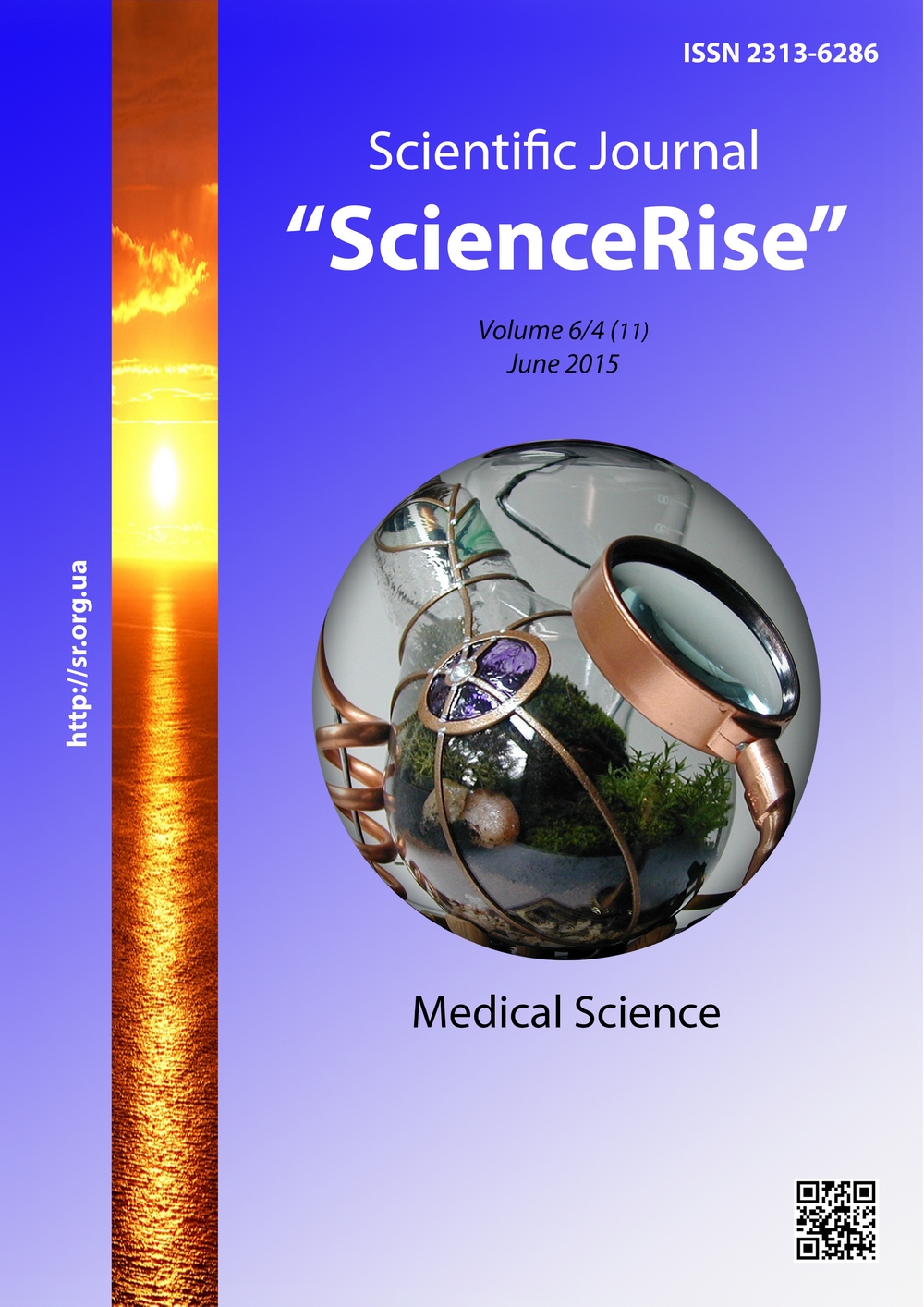The state of cytokine reactivity in patients treated with ozonobaroterapy at the complex treatment of festering diseases and wounds of limbs
DOI:
https://doi.org/10.15587/2313-8416.2015.45467Keywords:
festering wounds of limbs, ozonobarotherapy, bacteriophage, surgical treatmentAbstract
Foundation. One of the mechanisms of ozone effect is its impact on immune state of organism. The work is devoted to study of peculiarities of the state of proinflammatory cytokines at the complex treatment of patients with festering diseases and wounds of limbs.
Materials and methods: It was examined and treated 162 patients with festering diseases and wounds of limbs. In the main group 87 patients underwent treatment with ozonebaro- and ozonetherapy, and in the group of comparison 75 patients were treated according to accepted standards. It was studied the content of proinflammatory cytokines TNFα, Il-2, Il-8 in the blood of patients with festering wounds in both groups depending on the volume and area of wounds in the dynamics of treatment.
Results: Studying the group of comparison it was established a positive connection between the concentration of TNFα, Il-2, Il-8 and the volume and area of the wound process. It was revealed that hyperactivity of organism that led to the “necrotic” script of development of an alternative phase of the wound process was one of the causes of large necrosis. At chronization of the wound process the level of cytokines decreased on the 15 day comparing with patients with a smooth clinical course that indicated the decrease of reactivity of organism.
The offered medical and diagnostic algorithm of the treatment patients using ozone- and ozonebarotherapy favored an improvement of the results of treatment and fastened the healing of wounds.
In analysis of the level of cytokines in patients of the main group it was revealed that at the high levels of proinflammatory cytokines the use of the offered methods of treatment favor the decrease of its level and at chronization (with the low level of cytokines) its concentration increases. So the use of ozonebaro- and ozonetherapy leads to normalization of immune response and diminishes the probability of chronization of the wound process.
Conclusions: The study of the level of proinflammatory cytokines allows evaluate the clinical course of the wound process objectively, to reveal the tendency to its chronization. The use of ozonebaro and ozonetherapy leads to normalization of immune response at the too high or too low levels of IL-2, IL-8, TNFa and diminishes the probability of chronization of the wound process. The data received during the research indicate an efficiency of the offered methods of treatment
References
Lebed, A. A., Alekseeva, V. V., Olifirova, O. S. (2012). Nekotorye sposobi optimizacii lechenya gnoinoi chirurgicheskoy infekcii [Some ways to optimize the treatment of purulent surgical infection]. Bulletin of the East Siberian Scientific Center of the RAMS, 86 (4), 68–70.
Samies, J., Gehling, M. (2008). Acoustic pressure wound therapy for management of mixed partial– and full–thickness burns in a rural wound center. Ostomy Wound Manage, 54 (3), 56–59.
Zasorin, A. A., Gusev, E. J., Chernyad'ev, S. A. et al. (2010). Osobennosti effectivnosti ozonoterapii s pomoshy integralnych pokazateley sistemnoy vospalitelnoy reakcii pri gnoinych zabolevaniyach myagkih tkaney u voennosluzashich. [Features of the effectiveness of ozone therapy with the help of integrated indicators of system inflammatory response in purulent diseases of soft tissues in the military]. Bulletin of the Russian Academy of Medicine, 4, 106–109.
Vynnik, Y. S., Salmyna, A. B., Dobrushevskaya, A. I. et al. (2012). Vozmognosti ozonoterapii v korrekcii molleculyarnich mechanizmov oslognennogo reparativnogo processa na fone sacharnogo diabeta [The possibilities of ozone therapy in the correction of the molecular mechanisms of complicated reparative process of diabetes mellitus ]. Journal of New Medical Technologies, 4, 101–105.
Young, A. R. (2010). The biological effects of ozone depletion. Br J ClinPractSuppl, 89, 10–15.
Struchkov, A. A., Morozov, I. N. (2013). Primenenyemetodovozonoterapiiprilicheniiprolegney [Application of ozone therapy in the treatment of bedsores]. Medical almanac, 3, 122–123.
Antoszewski, Z., Kulej, J., Gwizdala, C. J. et al. (2010). Some aspects of ozone therapy. Przegl. Lek, 54 (7-8), 561–564.
Nystrom, P. O. (1998). The systemic inflammatory response syndrome: definitions and aetiology. Journal of Antimicrobial Chemotherapy, 41(suppl 1), 1–7. doi: 10.1093/jac/41.suppl_1.1
Downloads
Published
Issue
Section
License
Copyright (c) 2015 Микола Миколайович Велигоцький, Олександр Вікторович Горбуліч, Ігор Єгорович Бугаков, Олена Михайлівна Климова

This work is licensed under a Creative Commons Attribution 4.0 International License.
Our journal abides by the Creative Commons CC BY copyright rights and permissions for open access journals.
Authors, who are published in this journal, agree to the following conditions:
1. The authors reserve the right to authorship of the work and pass the first publication right of this work to the journal under the terms of a Creative Commons CC BY, which allows others to freely distribute the published research with the obligatory reference to the authors of the original work and the first publication of the work in this journal.
2. The authors have the right to conclude separate supplement agreements that relate to non-exclusive work distribution in the form in which it has been published by the journal (for example, to upload the work to the online storage of the journal or publish it as part of a monograph), provided that the reference to the first publication of the work in this journal is included.

